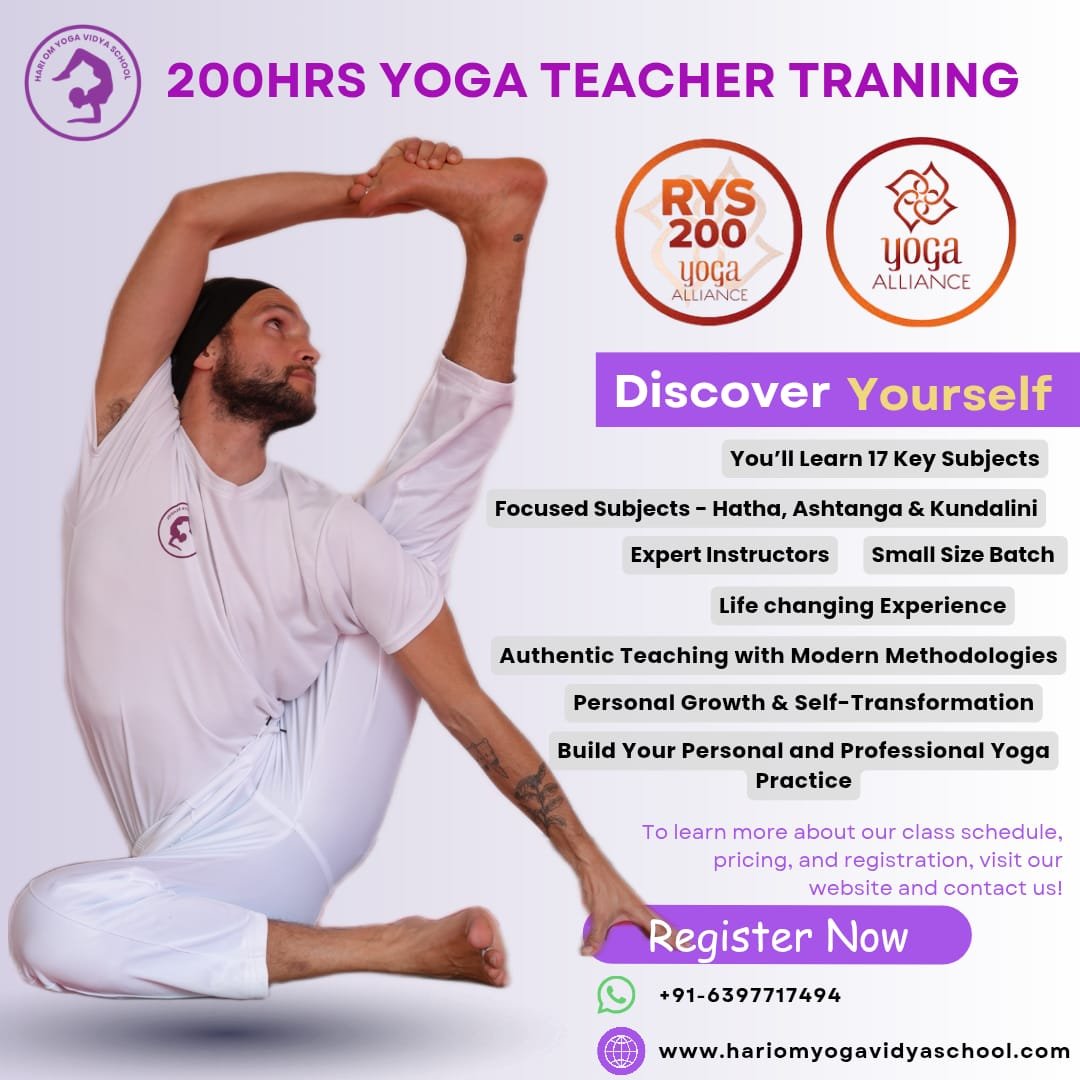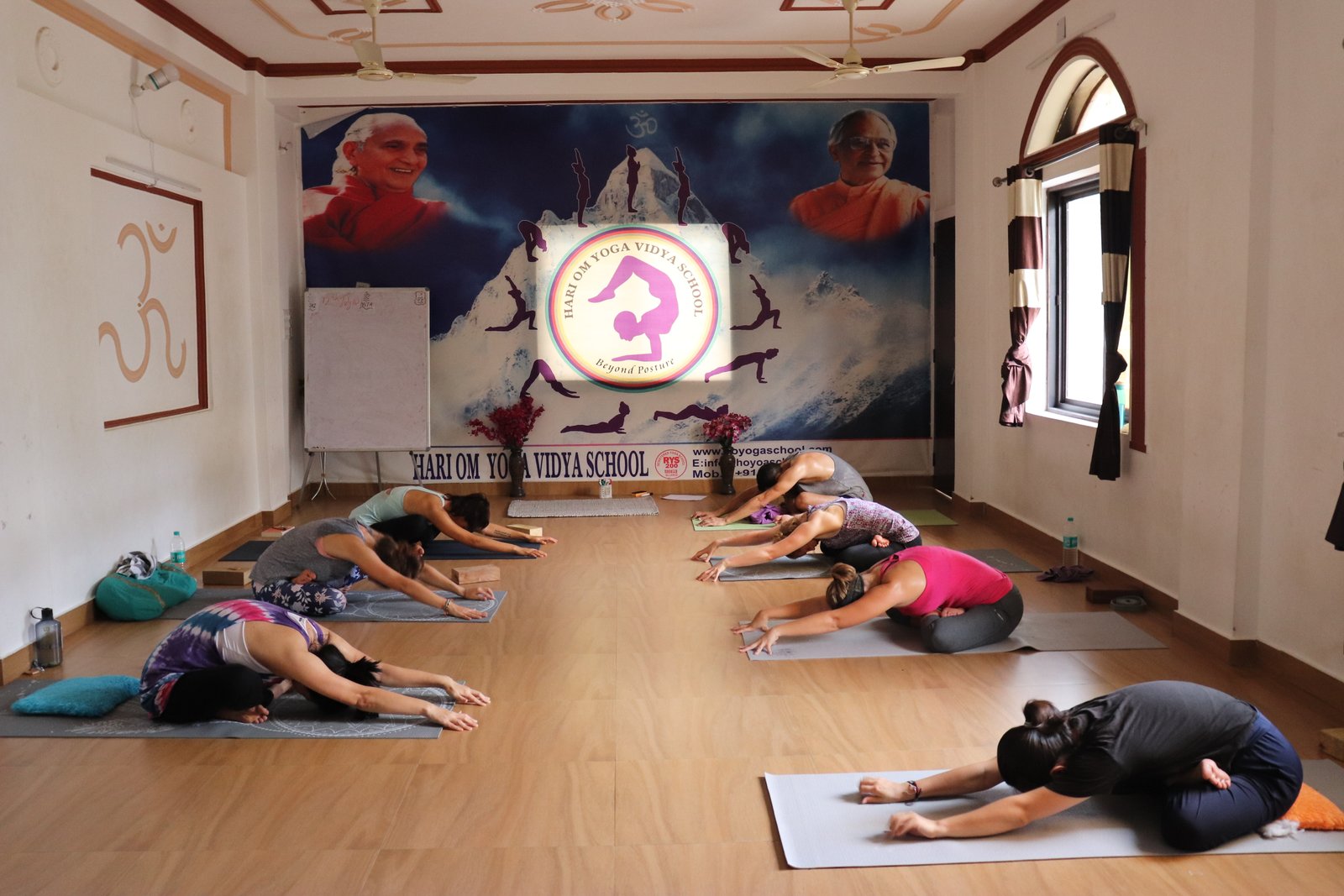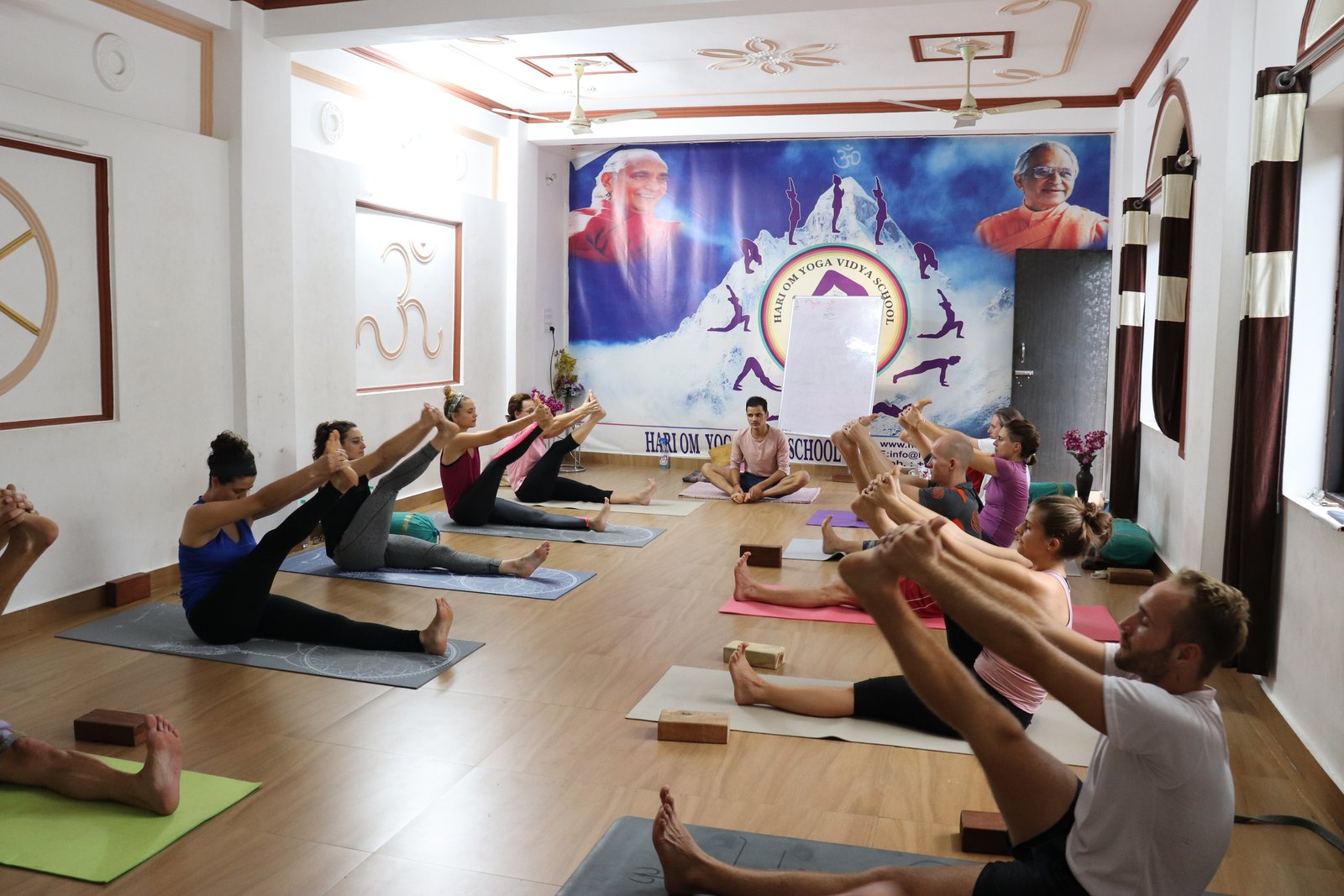There is always a right way and a wrong way to do things. The same applies to asanas in yoga. If you do not do the same in a perfect order, there are high chances that you will not get the desired benefits. When you enrol for the 200 hour yoga teacher training course, almost always you will be guided through the same in an order. The best teachers at the school of yoga, will let you know, which sequences are to be followed for which concern. If you do not have any concerns as such, then also following a sequence will help you to utilize the practice to the fullest.
Read More: Why Is Kundalini Yoga Dangerous? The Truth About Its Risks and Rewards
Why Should You Use Asanas Yoga Sequence?
As a part of any yoga teacher training course, you ought to find out why you must do the poses, or any other practice whatsoever in an order. We have listed two of the most important reasons for you.
- Safety is the first aspect, which everyone who is practicing yoga must keep in mind. Most well-experienced teachers start with seated asanas, before guiding the students to standing and floating poses. The ultimate aim is to loosen the muscles, bones, tendons, and ligaments. After you are comfortable, you can start with the standing poses.
- Balance – This is the second important reason, why you should use one order, to address various concerns. To explain in an easier manner, if you are doing backbends for some time, in a single class, it makes sense to do forward bends, to balance the body. You must practice the poses, which are both-sided simultaneously, so that one part of the body, does not feel all the stress.
However, there are no stringent rules. Your guru has a huge role to play, in deciding what is best for you.
Best Order For Yoga Asanas
You must remember, that in order to learn all the alphabets in English, you had to start from A, then B, and so on. You always followed a perfect order at preschool. The same applies to yoga, as the right direction will lead to consistency and perfection. Moreover, you will never be able to reach that ultimate goal, if your order is not correct. It is just like cooking. If the order and timing of masalas is not correct, the end result will be devastating.
Correcting the order and sequencing is not just art or knowledge. There is scientific reasoning behind the same. You have to keep in mind, that yoga follows a set of principles. According to some of the biggest proponents of yoga, humans did not devise the system of asana order. It was pre-determined. There are four parts in any human body, the skeletal part, the muscular part, the organ part, and the energy part. The organs inside the human body are not just fixed with clamps and bolts. They are flexible. Sometimes, the movements can disrupt the internal activity, if the environment is not conducive.
When you are practicing Hatha Yoga, the comfort levels of organs are always considered. Energy comfort also assumes a lot of importance. If you activate one component of your energy, without the other, it will not yield the same results as you expected. Energy is sometime not distributed in a proper manner. That is the reason why, few people are never happy. You may have all the riches in the world, but you will still not feel complete. If you activate your body and energy through the correct sequence or order, no matter, what challenges life throws at you, you will be able to handle them perfectly.
You have to keep a few things in mind, while performing asanas.
Things To Keep In Mind While Performing Yoga Asanas
You should keep in mind the tips, mentioned herein, so that you can get all the benefits.
- You must warmup sufficiently before doing asanas in a full-fledged manner. The asanas that you start with, must prepare the body to do the next asana. This also ensures that the practice is safe and sound.
- You should always set a goal for a session. In that case, you will be practicing the same sequence of asanas. You may want the practitioner or yourself to feel something specific. On the other hand, you may want to prepare the mind and body, to do a difficult split. You can also address specific issues like headaches, backaches, and injuries, so you have to plan the order of asanas in that manner.
- You also need to keep in mind, what the ultimate goal of the session is. If you are heading towards energization, the order will be one. On the other hand, if you are heading towards relaxation, the order will change. An energization session generally begins and ends with stimulating poses and breathworks. You have to do the asanas at a much faster pace as well. In the case of relaxation, the poses and breathworks will be mild. You can move into twists, forward bends, and backward bends thereafter.
- You should have a proper understanding of anatomy. That is why, the best yoga school in Rishikesh lays so much stress on anatomy lessons. If you have the knowledge of anatomy, you will understand what suits or does not suit an individual.
- Moreover, you should consider the proportion of the poses. If you are organizing a class of, say, 90 minutes, here is how you should go about it. 20-25 minutes of warm up will be a good option for you. Then 20-25 minutes can be seated asanas, and back bends. Keep 10 minutes to do poses, that cool down the body. Lastly, keep 5-10 minutes for corpse pose or Shavasana.
- You should respect the knowledge that has been passed on in any lineage from one guru to another. If you try to go against it, things will not work. If you maintain a perfect order and sequence, it will be beneficial for your students and if you are doing it for yourself, it will benefit you.
If you are doing Hatha Yoga, you should first try to accomplish the asanas, then do the Pranayama, then mudras and lastly bandhas. You can also add on meditation to the final stage. This order has a certain meaning in the realm of Hatha Yoga. You have to strengthen the physical body first, and activate the ‘Prana’ through asanas. Then you have to navigate to Pranayama, which will help you to purify the nadis or channels. Mudras helps in directing the flow of the Prana as well. Bandhas draw the same upwards, and allows the incumbent to make it meet the crown chakra, from where awakening occurs.
If you are trying to address your concern for back pain, then you can do these five asanas enlisted below.
You can start with the Tadasana, then do the Virabhadrasana, follow it up with the Trikonasana, then do Matsyendrasana and finally the Shalabhasana. You will get relief in back pain, if you follow this particular order. Moreover, give ample time to the body to break from one form and enter the other. You should not be in any kind of hurry. Hari Om Yoga Vidya School is one of the best yoga school in Rishikesh, from where you can start your yogic journey.
One of the most common questions asked by yoga practitioners and teacher training students alike is: “Is there a specific sequence to practicing yoga asanas?” The short answer is yes. The order of yoga asanas plays a significant role in maximizing the benefits of your practice and ensuring safety, especially for beginners or those undergoing a Yoga Teacher Training (YTT) course.
Whether you’re a yoga enthusiast or pursuing a yoga teacher training in Rishikesh, understanding the yoga asana sequence is essential. A well-planned sequence not only enhances your physical and mental experience but also prepares you to guide others with clarity and confidence.
Why Sequence Matters in Yoga
Yoga is not just about bending and stretching — it’s a systematic practice that aligns the body, breath, and mind. The sequence of asanas impacts how energy flows through the body (prana), how your muscles warm up, and how your nervous system responds. A poorly designed flow may lead to discomfort or even injury.
In a yoga teacher training course, sequencing is a foundational topic. Learning which asana should be done first and why helps teachers create effective and safe classes.
General Order of Yoga Asanas
While there can be variations depending on the style (Hatha, Ashtanga, Vinyasa, etc.), a traditional yoga asana sequence generally follows this structure:
Centering & Breath Awareness
- Brings awareness to the present moment
- Prepares the mind for practice
- Brings awareness to the present moment
Warm-up Movements
- Loosens joints and warms muscles
- Includes practices like Pawanmuktasana Series, neck rolls, shoulder rotations
- Loosens joints and warms muscles
Standing Asanas
- Builds strength and stability
- Energizes the body
- Examples: Tadasana, Trikonasana, Virabhadrasana
- Builds strength and stability
Balancing Asanas
- Enhances focus and body awareness
- Examples: Tree Pose, Eagle Pose
- Enhances focus and body awareness
Inversions & Backbends
- Stimulates the nervous system
- Opens the heart and chest
- Examples: Sarvangasana, Ustrasana
- Stimulates the nervous system
Forward Bends & Twists
- Calms the nervous system
- Aids digestion and spine flexibility
- Examples: Paschimottanasana, Ardha Matsyendrasana
- Calms the nervous system
Supine Asanas & Hip Openers
- Gently release tension and stretch deep muscle groups
- Examples: Supta Baddha Konasana, Setu Bandhasana
- Gently release tension and stretch deep muscle groups
Cooling Down & Relaxation
- Prepares the body to enter deep rest
- Includes pranayama and meditation
- Prepares the body to enter deep rest
Final Relaxation (Savasana)
- Integrates the effects of the entire session
- Promotes complete mental and physical relaxation
- Integrates the effects of the entire session
This progression from active to passive, and from gross to subtle, is the backbone of most asana yoga classes and YTT modules.
Read More: Everything You Need to Know About Kundalini Yoga Teacher Training
Benefits of Following a Proper Asana Sequence
Understanding and practicing a well-designed sequence brings several advantages:
- Maximized Benefits of Doing Asanas: Each posture prepares the body for the next, increasing flexibility, strength, and awareness.
- Prevention of Injury: Warm-up and preparatory poses reduce the risk of strain or injury.
- Improved Energy Flow: A balanced practice ensures smooth movement of prana.
- Better Teaching Foundation: Essential for those learning in a 100- or 200-hour YTT course.
Especially during your yoga teacher training, you’ll not only practice sequences but also learn to craft your own based on the needs of different students.
Understanding All Yoga Asanas and Their Benefits
In YTT programs, you study all yoga asanas and their benefits in depth. This includes:
- Physical benefits (strength, flexibility, organ health)
- Psychological benefits (calmness, focus, stress relief)
- Energetic effects (chakra balancing, pranic flow)
Knowing the order of yoga asanas enhances your ability to create sequences that target specific goals — whether for stress relief, flexibility, back pain, or emotional balance.
Cultural Perspectives: Yoga-Asanas Reihenfolge
In the global yoga community, the term “yoga-asanas reihenfolge” (German for “sequence of yoga postures”) is also gaining attention. It emphasizes that yoga, though adaptable, retains a strong traditional backbone — the order is not random.
During international yoga teacher training courses, particularly in places like Rishikesh, the importance of sequencing is taught in a way that honors both tradition and modern anatomy.
Final Thoughts
To sum up, yes — there is an ideal order in which asanas should be performed in yoga. Whether you’re practicing at home or studying in a yoga teacher training course, following a thoughtful yoga asana sequence will deepen your experience and keep your practice safe and effective.
By understanding the sequence of asanas and how they work together, you lay a strong foundation not just for personal growth, but also for guiding others through their yoga journey.
Ready to explore sequencing in depth? A certified Yoga Teacher Training in Rishikesh can be the perfect place to start.
FAQs: Common Questions About Yoga Sequences
Can I change the yoga sequence depending on my mood?
Yes, but it’s best to follow a structured warm-up and cool-down. You can adjust the core poses based on how your body feels.
What if I skip an asana in the sequence?
Skipping occasionally is fine, but skipping warm-ups or rest can affect your body’s ability to process the practice effectively.
Is there a fixed yoga-asanas reihenfolge for all styles?
Not necessarily. Hatha, Vinyasa, and Ashtanga each have their own preferred sequences, but the principles remain similar.
How can I remember the correct order of yoga asanas?
Joining a class or following a certified teacher can help you learn the flow. Over time, your body will remember it naturally.
Would you like a featured snippet or meta description crafted for this blog as well?
Deepen Your Yoga Practice with Hari Om Yoga Vidya School
Located in the heart of Rishikesh, Hari Om Yoga Vidya School is a place where ancient yogic wisdom meets modern teaching techniques. As a top yoga school in Rishikesh, we are committed to providing authentic, immersive yoga education in a peaceful, spiritual setting. Recognized as one of the best yoga schools in Rishikesh, we offer structured training programs designed to help you evolve in your practice, whether you are a beginner or an experienced yogi.
If you’re searching for a yoga school in Rishikesh that focuses on holistic learning, experienced teachers, and a supportive community, look no further!
Explore Our Yoga Teacher Training & Retreats
At Hari Om Yoga Vidya School, we offer a range of courses tailored for different levels of practitioners:
✅ 100-Hour Yoga Teacher Training in Rishikesh – A foundational course for those looking to begin their yoga journey.
✅ 200-Hour Yoga Teacher Training in Rishikesh – An internationally recognized certification for aspiring yoga teachers.
✅ 300-Hour Yoga Teacher Training in Rishikesh – Advanced training to deepen your practice and refine your teaching skills.
✅ 7-Day Yoga Retreat in Rishikesh – A rejuvenating escape into yoga, meditation, and self-discovery.
✅ 10-Day Yoga Retreats in Rishikesh – A transformative experience that blends yoga, relaxation, and Himalayan serenity.
Join us for a life-changing experience and become part of our global yoga family! 🌿✨







